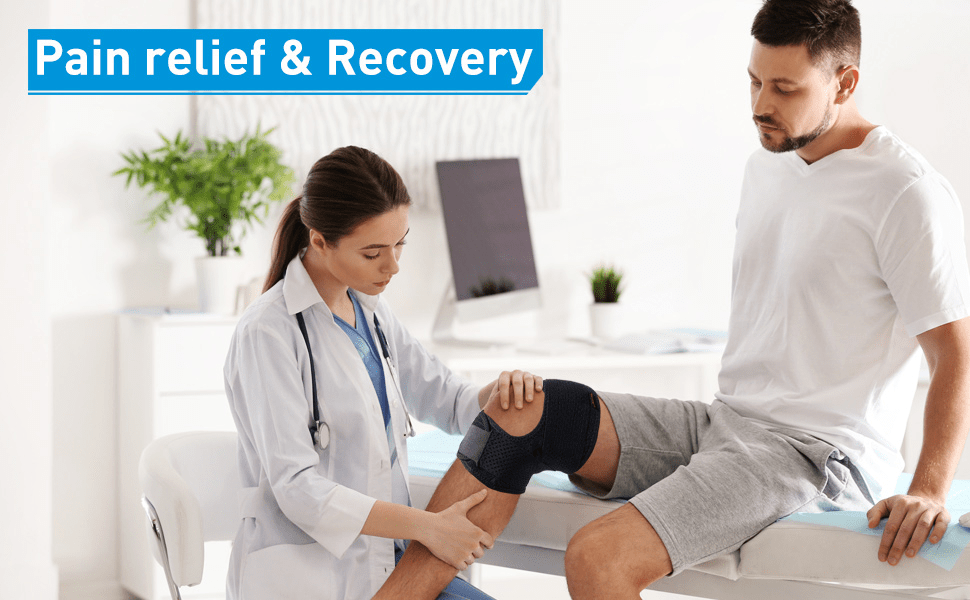Call us now:
There’s no doubt knee supports are important when nursing an injury or for injury prevention, but choosing the right one can be a daunting task. Knowing more about how to pick the best knee support for your individualized needs by using a knee support guide can make the process more enjoyable.
When to Wear a Knee Support
In general, braces should be worn if you’re having knee pain or you wish to prevent injuries during high contact sports where there is a higher likelihood of knee injury. Knee braces can also be used for rehabilitative purposes, for example, following an ACL injury. The brace will provide slow, limited movement allowing the patient to gradually regain their range of motion. Knee braces also come in handy for arthritis sufferers as it can aid in reducing pain and inflammation. Your doctor can help you decide if it’s necessary.
Levels of Protection
When choosing a knee support, look for levels of protection ranging from 1 to 3+. A Level 1 Brace offers the least amount of support, but is the most flexible, such as a knee sleeve. It’s best for pain relief and mild to moderate support when remaining fully active.
Level 2 Braces offer more protection than Level 1, they aren’t as flexible, but still allow for a range of movement. Wraparound braces and knee straps are good examples. You’ll receive mild to moderate knee support for pain relief associated with ligament instabilities and tendonitis.
A Level 3 Brace, such as a hinged knee brace, offers you the most support but limited movement. This type of brace is also generally heavier. It’s best for recovering from surgery, when knee movement should be limited to prevent re-injuring yourself. To take it a step further, there is always the option of a 3+ Level for Maximum Protection. This level is best for aiding in pain relief and support for moderate to major instabilities and conditions

Types of Knee Support
There are several types of knee braces available to choose from, such as sleeves, wraparound braces, hinged braces, and straps.
Knee Sleeves come in different sizes, and you can slip them right over your knee. They provide knee compression, which helps control swelling and pain. Knee Sleeves often work well for mild knee pain, and they help minimize arthritis. Sleeves are comfortable and can fit under clothing.

A Knee Strap is a great solution if you suffer from Knee Pain due to Runner’s knee or jumper’s knee (Patellar Tendonitis), Osgood-Schlatter Disease, or Patella Tracking. It can fit under clothes and is easy to put on and take off. Wearing this type of strap helps prevent patella injuries and minimizes knee pain by putting compression on your Patellar Tendon.

Wraparound or Dual-Wrap Braces work well for athletes experiencing mild to moderate knee pain, providing more support than sleeves. These braces are easy to put on and take off, and can be used while training – they don’t have the bulk and heaviness of hinged braces.

Closed and Open Patella Braces might be confusing when you see some braces with an open patella (a hole in the center of the brace) and others with a closed patella (no holes). Braces with an open patella allow relief of knee pressure and extra knee cap support with proper movement and tracking. Closed patella braces, on the other hand, offer compression at the knee cap with the same pressure as the rest of the knee and additional support. Ask your doctor if you are unsure which is a better option for your needs.

How Tight Should the Brace Be?
You’ll want to have compression, feeling of tightness in your knee when using a knee brace. It should feel comfortable and provide a level of support necessary based on your individualized needs. However, if the brace is uncomfortably tight and you’re losing circulation, it’s time to loosen the straps or choose a larger sized brace. Rigid braces provide more support and feel rigid, while compression sleeves allow for more movement but less support. Use a size chart to determine which flexible knee sleeve to choose based on the circumference (distance around) your knee below the center of the knee cap.
Which Brace to Choose?
The right knee brace for you depends on the level of support needed and/or what your doctor recommends. This decision is based on whether or not you’re recovering from surgery, the type of injury you have, and how much movement your knee should be getting.

